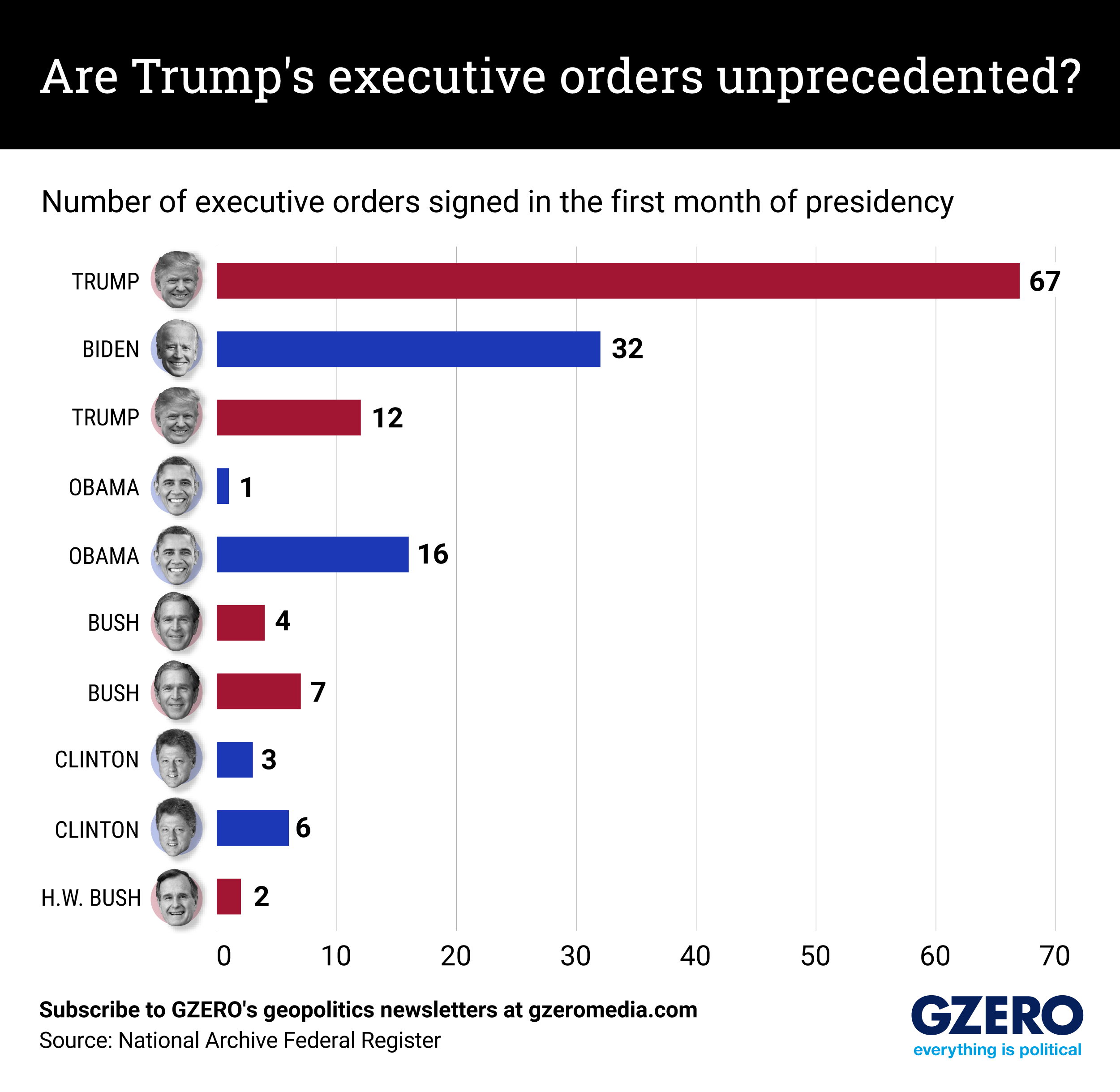February 19, 2025
All presidents issue executive orders, but in the first month of his second presidency, Donald Trump has been signing them like they're going out of style.
He has issued 66 executive orders so far, more than double the number of executive orders Joe Biden signed in the first month of his presidency, and more than five times the number Trump signed during the first 30 days of his last term in 2016.
While executive orders are effective for hitting the ground running and fulfilling those infamous “first 100 days” campaign promises, critics point out that they are easily overturned, as seen on Trump’s first day in office, when he issued 26 executive orders, but also overturned 78 of Biden’s.
Some also argue that they are a sign of weakness – a cop-out used instead of passing lasting legislation through a perpetually gridlocked Congress. The deluge of legal challenges in response to Trump’s executive orders also shows how they can be stalled, or smacked down, by judges.
From Your Site Articles
More For You
Behind every scam lies a story — and within every story, a critical lesson. Anatomy of a Scam, takes you inside the world of modern fraud — from investment schemes to impersonation and romance scams. You'll meet the investigators tracking down bad actors and learn about the innovative work being done across the payments ecosystem to protect consumers and businesses alike. Watch the first episode of Mastercard's five-part documentary, 'Anatomy of a Scam,' here.
Most Popular
Think you know what's going on around the world? Here's your chance to prove it.
© 2025 GZERO Media. All Rights Reserved | A Eurasia Group media company.
